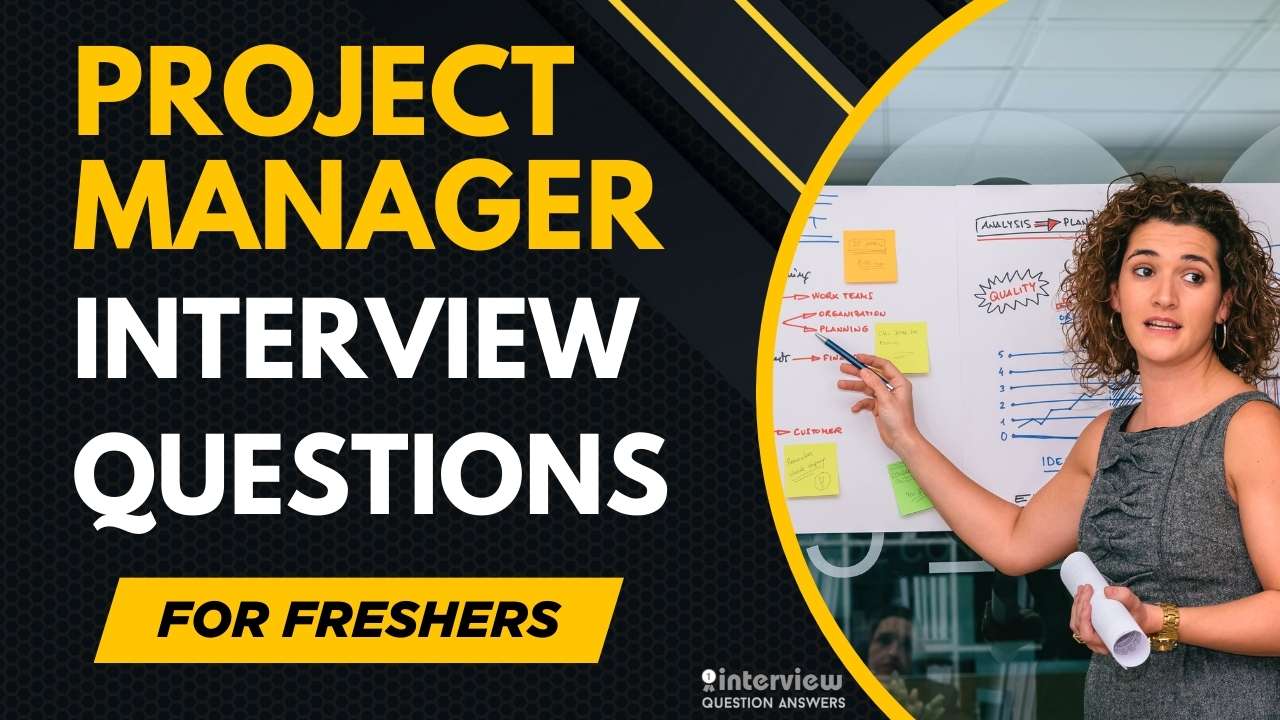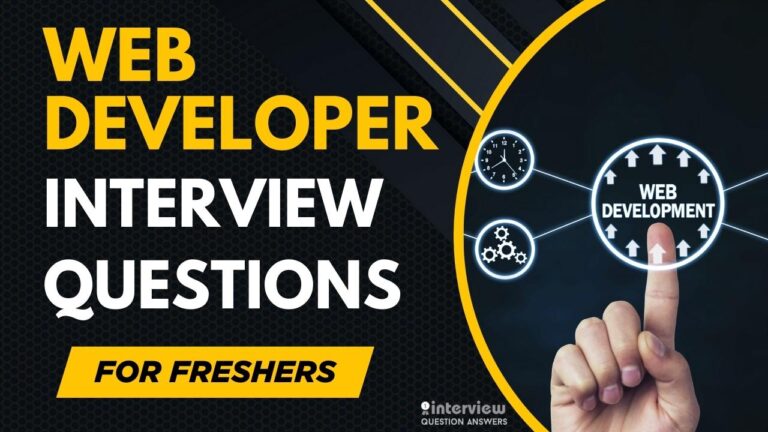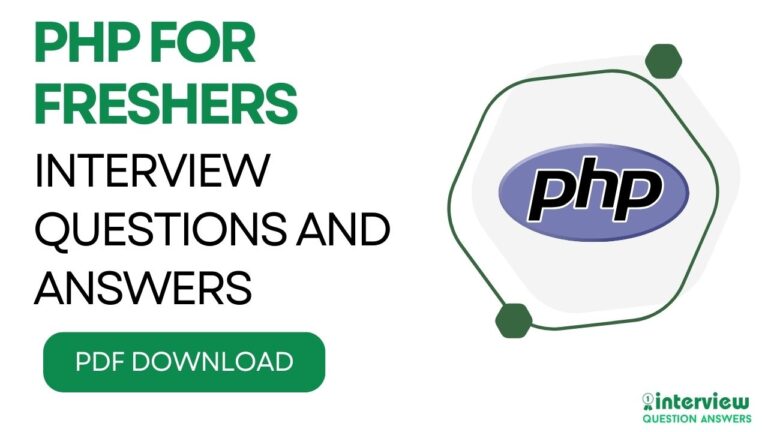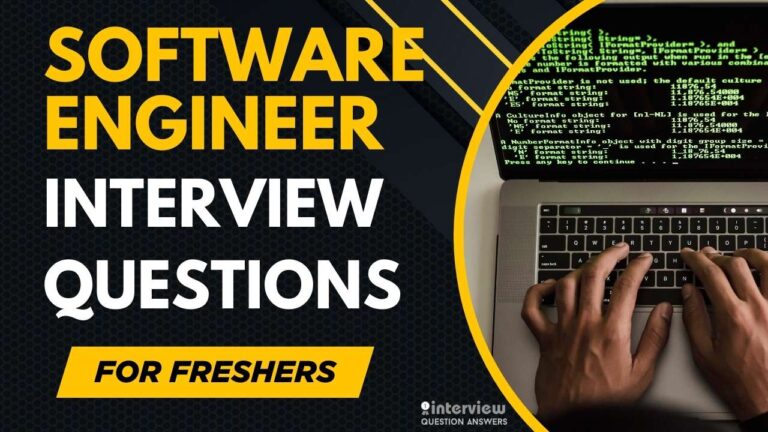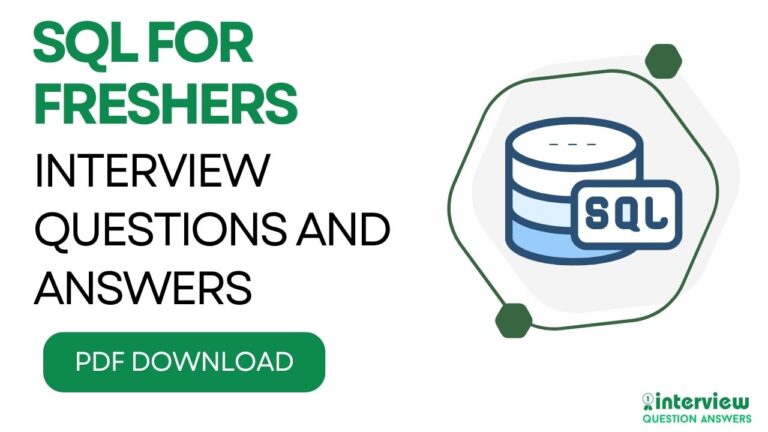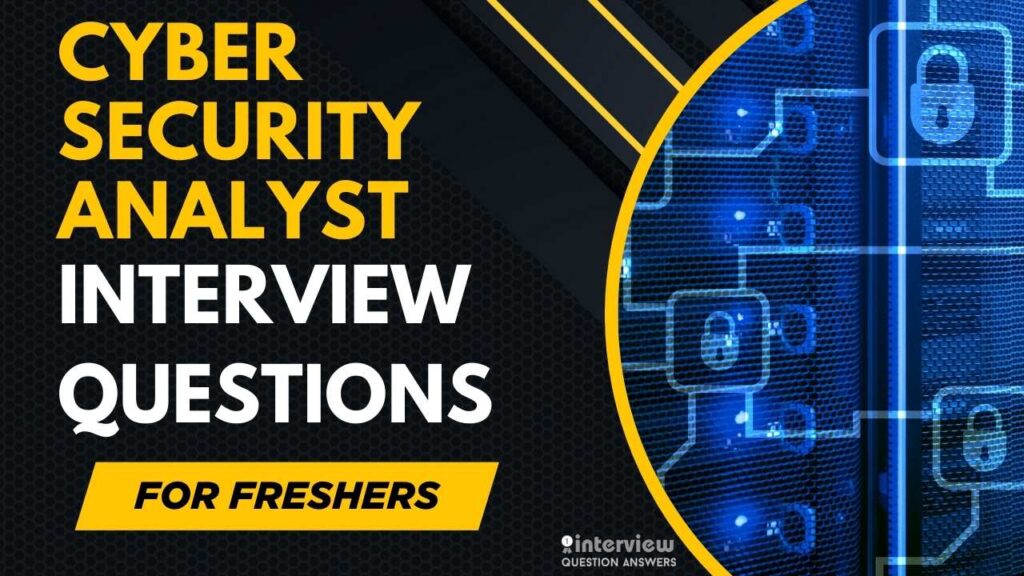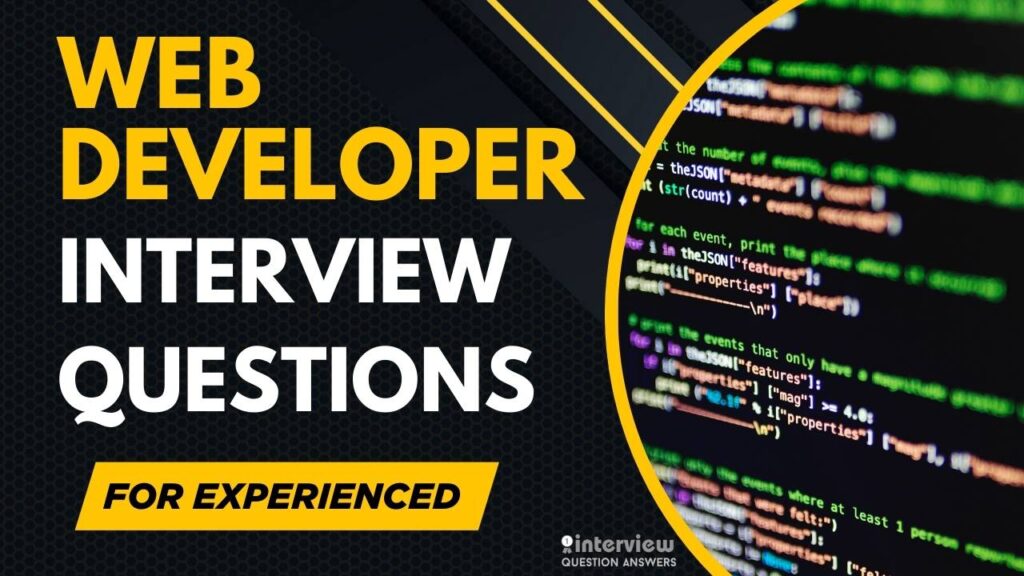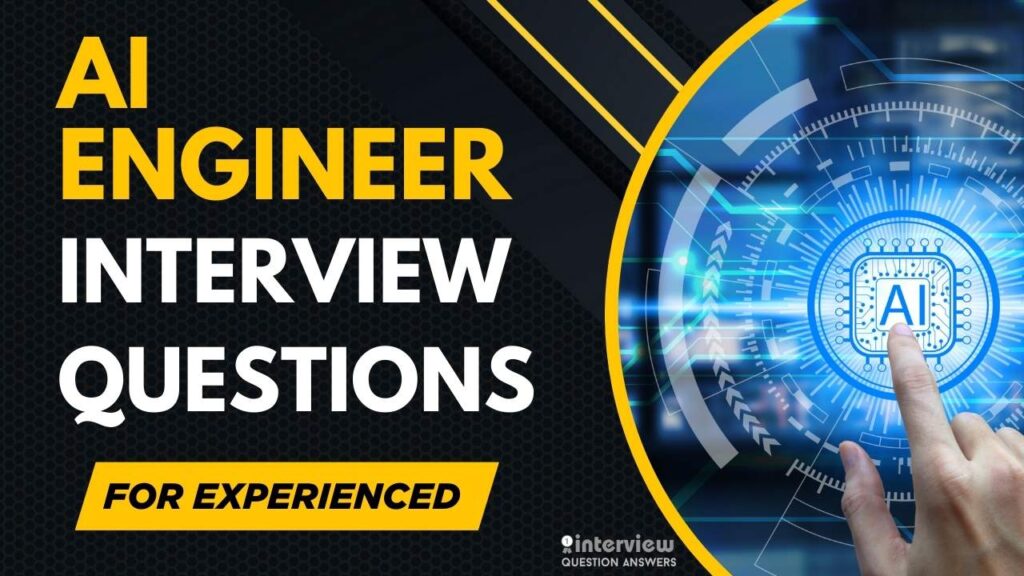Top 60 Project Manager Interview Questions for Freshers
Project Manager Interview Questions for Freshers focus on fundamental project management principles, leadership potential, and organizational skills that entry-level candidates must demonstrate. Breaking into project management requires mastering both theoretical frameworks and practical coordination abilities that employers seek from new project management professionals.
This page covers Project Manager Interview Questions for Freshers seeking their first role in project coordination, addressing project lifecycle phases, stakeholder management, risk assessment, and team collaboration techniques. These Project Manager Interview Questions for Freshers will help you showcase your leadership abilities, understanding of project methodologies, and readiness to drive successful project delivery.
You can also check: Project Manager Interview Questions
Table of Contents
Entery-Level Project Manager Interview Questions
Que 1. What is the role of a Project Manager in a project?
Answer: A Project Manager oversees the planning, execution, and completion of a project, ensuring it meets objectives within scope, time, and budget. They coordinate teams, manage resources, and communicate with stakeholders. For entry-level roles in 2025, focusing on organization and clear communication is key.
Que 2. What is the difference between a project and a program?
Answer:
| Feature | Project | Program |
|---|---|---|
| Scope | Specific, defined deliverables | Multiple related projects |
| Duration | Temporary, finite | Ongoing, long-term |
| Objective | Single goal | Strategic business outcomes |
For entry-level, understanding this distinction aids in managing project boundaries.
Que 3. How do you define the scope of a project?
Answer: Define scope by identifying objectives, deliverables, and boundaries through stakeholder interviews and requirements gathering. Document in a project charter or scope statement. For entry-level in 2025, using tools like Trello or Microsoft Project to track scope ensures clarity.
Que 4. What is a Work Breakdown Structure (WBS), and why is it important?
Answer: A WBS breaks a project into smaller, manageable tasks, organized hierarchically. It’s important for planning, resource allocation, and tracking progress. For entry-level, creating a WBS in tools like Excel or Wrike helps structure tasks.
Example:
**WBS Example**
- 1.0 Project
- 1.1 Planning
- 1.1.1 Define Scope
- 1.2 Execution
- 1.2.1 Develop ProductQue 5. How do you prioritize tasks in a project?
Answer: Prioritize tasks using methods like the Eisenhower Matrix or MoSCoW (Must-have, Should-have, Could-have, Won’t-have), considering deadlines and dependencies. For entry-level, consulting stakeholders and documenting in JIRA ensures alignment.
Que 6. What is a Gantt chart, and how is it used in project management?
Answer: A Gantt chart visually represents project tasks, timelines, and dependencies. It’s used to track progress and schedule tasks. For entry-level in 2025, tools like Microsoft Project or Asana simplify Gantt chart creation.
Que 7. How do you handle a team member who is not meeting deadlines?
Answer:
- Discuss the issue privately to understand barriers.
- Reassess workload or provide support.
- Adjust timelines or escalate if needed.
For entry-level, documenting discussions in a project log maintains accountability.
Que 8. What is the purpose of a project charter?
Answer: A project charter formally authorizes a project, outlining objectives, scope, stakeholders, and key deliverables. It aligns teams and stakeholders. For entry-level, drafting a charter in Word or Confluence sets clear expectations.
Que 9. How do you manage project risks as a beginner?
Answer: Identify risks through brainstorming or SWOT analysis, assess their impact, and document in a risk register. Develop mitigation plans. For entry-level in 2025, using Excel or JIRA to track risks ensures proactive management.
Que 10. What is the difference between Agile and Waterfall methodologies?
Answer:
| Feature | Agile | Waterfall |
|---|---|---|
| Approach | Iterative, flexible | Linear, sequential |
| Delivery | Incremental releases | Single final deliverable |
| Change Management | Adapts to changes | Changes are rigid |
For entry-level, understanding Agile’s flexibility is key for dynamic projects.
Que 11. How do you ensure effective communication with stakeholders?
Answer: Use regular updates via emails, meetings, or tools like Slack, and tailor communication to stakeholder needs. For entry-level, maintaining a communication plan in Excel ensures consistency.
Que 12. What is a critical path in project management?
Answer: The critical path is the longest sequence of dependent tasks determining the project’s duration. Delays in these tasks delay the project. For entry-level, tools like Microsoft Project help identify it.
Que 13. How do you track project progress as a new Project Manager?
Answer: Track progress using tools like Trello, JIRA, or Microsoft Project, monitoring task completion against milestones. For entry-level in 2025, regular status reports to stakeholders ensure transparency.
Que 14. What is the role of a kickoff meeting in a project?
Answer: A kickoff meeting aligns the team and stakeholders on project goals, scope, and roles. It sets expectations and builds momentum. For entry-level, preparing an agenda in PowerPoint enhances effectiveness.
Que 15. How do you manage a project budget?
Answer: Estimate costs, track expenses in tools like Excel, and monitor against the budget. Address overruns by reallocating resources or revising scope. For entry-level, documenting variances ensures accountability.
Que 16. What is a stakeholder register, and how do you create one?
Answer: A stakeholder register lists stakeholders, their roles, and contact details. Create it by identifying stakeholders through interviews and documenting in Excel or Confluence. For entry-level, updating it regularly maintains engagement.
Que 17. How do you handle scope creep in a project?
Answer:
- Refer to the project charter to enforce scope.
- Use a change request process to evaluate impacts.
- Communicate changes to stakeholders.
For entry-level, logging changes in JIRA prevents uncontrolled expansion.
Que 18. What is the purpose of a RACI matrix in project management?
Answer: A RACI matrix (Responsible, Accountable, Consulted, Informed) defines roles for project tasks, ensuring clarity. For entry-level, creating it in Excel or Smartsheet avoids confusion.
Que 19. How do you motivate a project team as a beginner?
Answer: Set clear goals, recognize achievements, and foster open communication. For entry-level in 2025, regular check-ins and celebrating milestones in team meetings boost morale.
Que 20. What is a project milestone, and why is it important?
Answer: A milestone marks a significant event or deliverable, like phase completion. It tracks progress and motivates teams. For entry-level, defining milestones in tools like Asana ensures focus.
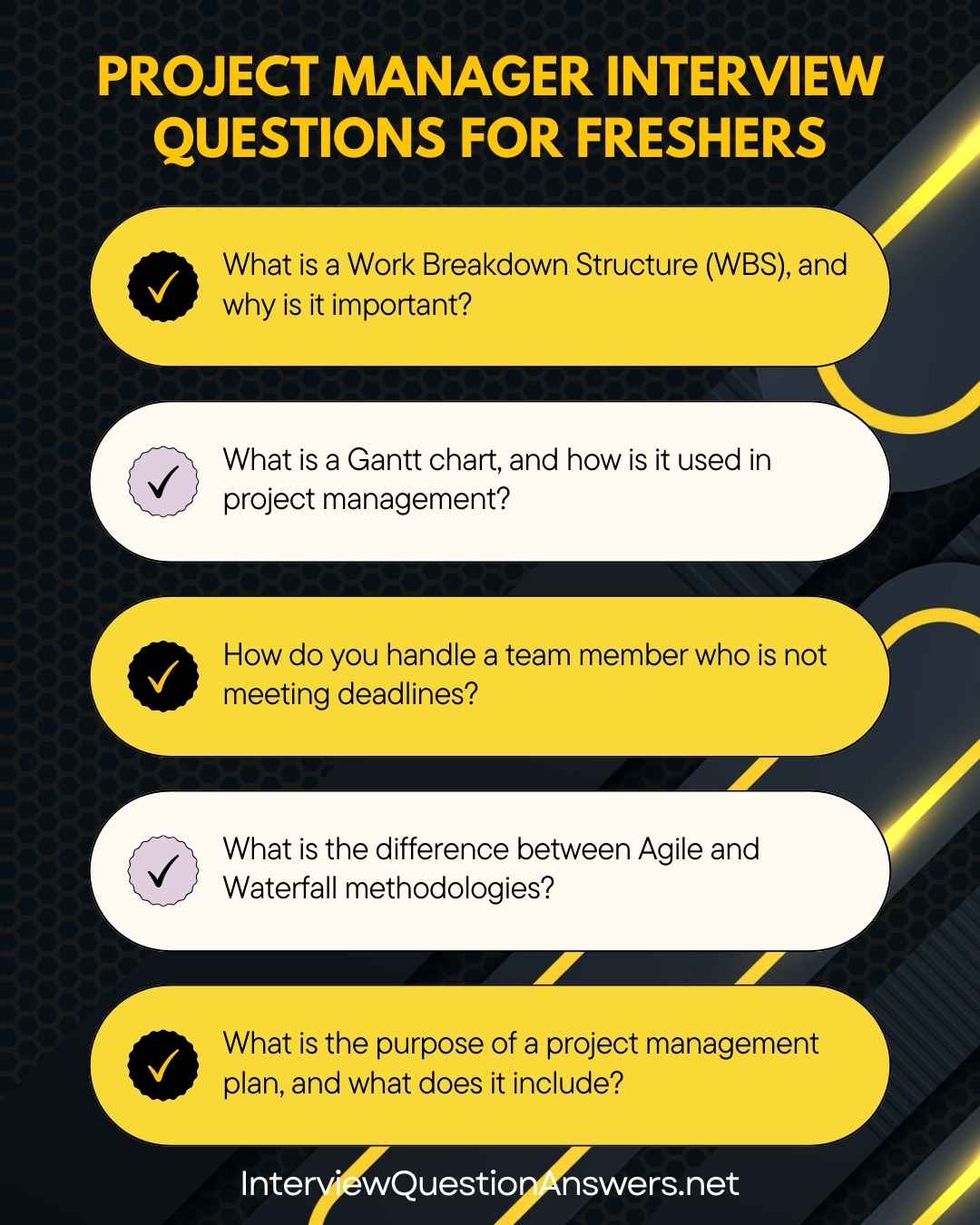
Basic Project Manager Interview Questions for Freshers
Que 21. What is the purpose of a project management plan, and what does it include?
Answer: A project management plan outlines how a project will be executed, monitored, and closed. It includes scope, schedule, budget, resources, risks, and communication strategies. For freshers in 2025, creating a plan in tools like Microsoft Project or Asana ensures a structured approach.
Que 22. How do you identify project stakeholders?
Answer: Identify stakeholders by reviewing project goals, consulting organizational charts, and conducting interviews with key personnel. Document them in a stakeholder register using Excel or Confluence. For entry-level, ensuring all relevant parties are included prevents oversight.
Que 23. What is the difference between a project deliverable and a milestone?
Answer:
| Feature | Deliverable | Milestone |
|---|---|---|
| Nature | Tangible output (e.g., report) | Significant event (e.g., phase end) |
| Purpose | Meets project objectives | Tracks progress |
| Example | Completed software module | Design phase completion |
For freshers, understanding this clarifies tracking and reporting.
Que 24. How do you create a project timeline?
Answer: List tasks, estimate durations, identify dependencies, and plot them using a Gantt chart in tools like Trello or Microsoft Project. For freshers in 2025, reviewing timelines with stakeholders ensures accuracy.
Que 25. What is a risk register, and how do you use it?
Answer: A risk register lists potential risks, their likelihood, impact, and mitigation plans. Use it to monitor and address risks throughout the project. For entry-level, maintaining it in Excel or JIRA supports proactive risk management.
Que 26. How do you ensure team members understand their roles?
Answer:
- Use a RACI matrix to define responsibilities.
- Hold a kickoff meeting to clarify tasks.
- Share documentation via Confluence or email.
For freshers, regular check-ins reinforce role clarity.
Que 27. What is the purpose of a status report in project management?
Answer: A status report communicates project progress, issues, and next steps to stakeholders. It includes completed tasks, risks, and timelines. For entry-level in 2025, creating reports in Word or Smartsheet keeps stakeholders informed.
Que 28. How do you manage a project with limited resources?
Answer: Prioritize tasks, optimize resource allocation, and negotiate with stakeholders for additional support. For freshers, using tools like Asana to track resource usage ensures efficiency.
Que 29. What is a dependency in project management?
Answer: A dependency is a relationship where one task relies on the completion of another. Types include finish-to-start or start-to-start. For entry-level, identifying dependencies in Microsoft Project prevents scheduling conflicts.
Que 30. How do you conduct a project closure meeting?
Answer: Review deliverables, discuss successes and challenges, and gather feedback. Document lessons learned in Confluence. For freshers in 2025, preparing an agenda in PowerPoint ensures a structured closure.
Que 31. What is the difference between a project goal and an objective?
Answer:
- Goal: Broad, high-level aim (e.g., improve customer satisfaction).
- Objective: Specific, measurable target (e.g., reduce response time by 20%).
For freshers, aligning objectives with goals in the project charter is key.
Que 32. How do you handle a stakeholder who frequently changes requirements?
Answer: Use a change request process, assess impacts on scope and timeline, and document decisions in JIRA. For entry-level, clear communication and referencing the project charter manage expectations.
Que 33. What is the purpose of a project schedule?
Answer: A project schedule outlines tasks, durations, and milestones, ensuring timely completion. For freshers, creating schedules in Trello or Excel and updating them regularly maintains control.
Que 34. How do you manage conflicts within a project team?
Answer:
- Address conflicts privately to understand perspectives.
- Facilitate open discussions to find solutions.
- Escalate to senior management if unresolved.
For freshers, documenting resolutions in a project log ensures transparency.
Que 35. What is earned value management (EVM), and why is it useful?
Answer: EVM measures project performance by comparing planned value, earned value, and actual cost. It helps track progress and budget adherence. For entry-level, understanding basic EVM metrics in Excel aids reporting.
Que 36. How do you ensure quality in project deliverables?
Answer: Define quality standards in the project plan, conduct reviews, and use checklists. For freshers in 2025, involving stakeholders in quality checks via tools like Smartsheet ensures compliance.
Que 37. What is a project baseline, and how is it used?
Answer: A project baseline is the approved plan for scope, schedule, and cost, used as a reference to measure progress. For entry-level, setting baselines in Microsoft Project and tracking deviations is standard.
Que 38. How do you use a project management tool like JIRA for task tracking?
Answer: Create epics and tasks, assign them to team members, set deadlines, and monitor status via dashboards. For freshers, updating JIRA regularly and linking tasks to requirements ensures traceability.
Que 39. What is the role of a lessons learned document in a project?
Answer: A lessons learned document captures successes, challenges, and recommendations for future projects. For entry-level, compiling it in Confluence or Word during project closure improves future performance.
Que 40. How do you ensure a project stays within budget?
Answer:
- Track expenses against the budget in Excel or Asana.
- Review costs regularly with stakeholders.
- Adjust scope or resources to address overruns.
For freshers, logging budget updates in a ticketing system maintains accountability.
Advanced Project Manager Interview Questions for Freshers
Que 41. How do you integrate risk management into the project planning process?
Answer: Integrate risk management by identifying risks during planning using SWOT or brainstorming, assessing their probability and impact, and documenting mitigation strategies in a risk register. Use tools like JIRA or Excel to track risks throughout the project lifecycle. For freshers in 2025, prioritizing high-impact risks and reviewing them in status meetings ensures proactive management.
Que 42. What is the difference between resource leveling and resource smoothing?
Answer:
| Feature | Resource Leveling | Resource Smoothing |
|---|---|---|
| Objective | Adjusts schedule to balance resources | Balances resources within schedule |
| Impact | May extend project duration | Maintains original timeline |
| Example | Delay tasks to avoid overtime | Reassign tasks within slack time |
For freshers, understanding these techniques aids resource management in tools like Microsoft Project.
Que 43. How do you use a cost-benefit analysis to justify project investments?
Answer: Conduct a cost-benefit analysis by estimating costs (e.g., labor, tools) and benefits (e.g., revenue, efficiency gains), calculating ROI or NPV, and presenting findings to stakeholders. For freshers in 2025, using Excel for calculations and documenting assumptions ensures transparency.
Que 44. What is the role of a project sponsor, and how do you engage them effectively?
Answer:
- Role: Provides funding, strategic direction, and resolves escalations.
- Engagement: Schedule regular updates, align on goals, and use concise reports (e.g., in PowerPoint).
For freshers, maintaining a sponsor communication log in Confluence builds trust and alignment.
Que 45. How do you manage dependencies across multiple projects in a portfolio?
Answer: Map dependencies using a dependency matrix, coordinate with other project managers, and track in tools like Asana or JIRA. For freshers, regular cross-project meetings and prioritizing critical dependencies prevent delays.
Que 46. What is the purpose of a project communication plan, and what does it include?
Answer: A communication plan outlines how, when, and with whom project information is shared. It includes stakeholders, communication methods (e.g., email, meetings), and frequency. For freshers in 2025, creating it in Excel or Smartsheet ensures consistent stakeholder engagement.
Que 47. How do you handle a project that is falling behind schedule?
Answer:
- Identify delays using a Gantt chart.
- Reallocate resources or adjust scope with stakeholder approval.
- Implement fast-tracking or crashing if feasible.
For freshers, documenting changes in JIRA and communicating impacts is critical.
Que 48. What is the significance of a project’s critical chain methodology?
Answer: Critical chain methodology focuses on resource constraints and task dependencies, using buffers to manage uncertainties. For freshers, understanding its focus on resource optimization compared to critical path enhances scheduling in tools like Microsoft Project.
Que 49. How do you ensure stakeholder buy-in during the project initiation phase?
Answer: Engage stakeholders through workshops, present a clear project charter, and align objectives with their priorities. For freshers in 2025, using visual aids in PowerPoint and documenting feedback in Confluence fosters commitment.
Que 50. What is the role of a quality management plan in a project?
Answer: A quality management plan defines standards, metrics, and processes to ensure deliverables meet requirements. It includes quality assurance and control measures. For entry-level, creating checklists in Smartsheet ensures adherence.
Que 51. How do you use Agile metrics like velocity to manage project progress?
Answer: Velocity measures the average work completed per sprint, helping predict future progress. Track it in JIRA or Trello and adjust sprint planning accordingly. For freshers, reviewing velocity trends with the team improves forecasting accuracy.
Que 52. What is the difference between a project constraint and an assumption?
Answer:
- Constraint: A limitation, like budget or time, that restricts options.
- Assumption: A belief taken as true, like resource availability, without proof.
For freshers, documenting both in the project plan avoids missteps.
Que 53. How do you conduct a stakeholder analysis for a complex project?
Answer: Identify stakeholders, assess their power and interest using a matrix, and tailor engagement strategies. For freshers in 2025, creating a stakeholder map in Miro or Excel and updating it regularly ensures effective communication.
Example:
**Stakeholder Matrix**
- High Power, High Interest: Engage closely
- Low Power, Low Interest: MonitorQue 54. What is the role of a change control board (CCB) in a project?
Answer: A CCB reviews and approves change requests, ensuring alignment with project goals. For freshers, preparing change request forms and presenting impacts in meetings supports the CCB’s decision-making.
Que 55. How do you use a project dashboard to monitor performance?
Answer: A project dashboard in tools like Power BI or Smartsheet displays KPIs like budget, schedule, and risks. For freshers, updating dashboards with real-time data and sharing with stakeholders ensures transparency.
Que 56. What is the purpose of a project retrospective, and how do you facilitate one?
Answer: A retrospective reviews what went well, challenges, and improvements post-project. Facilitate using frameworks like Start-Stop-Continue and document in Confluence. For freshers, engaging the team with interactive tools like Miro enhances outcomes.
Que 57. How do you manage virtual teams in a remote project environment?
Answer:
- Use collaboration tools like Slack or Teams for communication.
- Schedule regular check-ins with clear agendas.
- Track progress in JIRA or Asana.
For freshers in 2025, fostering inclusivity through virtual team-building strengthens collaboration.
Que 58. What is the significance of a project’s earned schedule (ES)?
Answer: Earned schedule measures time performance by comparing earned value to planned value, identifying schedule variances. For freshers, calculating ES in Excel helps assess if a project is ahead or behind schedule.
Que 59. How do you handle a project with conflicting stakeholder requirements?
Answer: Facilitate workshops to prioritize requirements using MoSCoW, document trade-offs, and gain consensus. For freshers, using JIRA to track decisions and maintaining open communication mitigates conflicts.
Que 60. What is the role of a project closure report, and what does it include?
Answer: A project closure report summarizes outcomes, deliverables, lessons learned, and stakeholder feedback. For entry-level, compiling it in Word or Confluence and presenting to stakeholders ensures formal project sign-off.
Conclusion
We have already shared the essential questions for Project Manager Interview Questions for Freshers. This comprehensive Project Manager Guide includes interview questions for fresh graduates, covering both basic and advanced concepts that employers commonly evaluate. The project management industry is rapidly evolving with agile methodologies, digital collaboration tools, and data-driven decision making becoming standard requirements for entry-level positions.
Similar Interview Guides:

